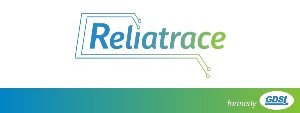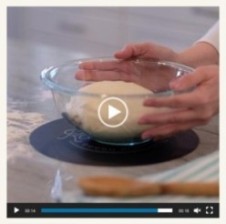
© CEOCFO Magazine -
CEOCFO Magazine, PO Box 340
Palm Harbor, FL 34682-
Phone: 727-
Email: info@ceocfocontact.com


Search





Business Services | Solutions
Medical | Biotech
Cannabis | Hemp
Banking | FinTech | Capital
Government Services
Public Companies
Industrial | Resources
Clean Tech
Global | Canadian
Lynn Fosse, Senior Editor
Steve Alexander, Associate Editor
Bud Wayne, Marketing
& Production Manager
Christy Rivers -





 Print -
Print -
RELIATRACE IS HEATING UP THE MARKETPLACE
 Mark Ester
Mark Ester
President/CEO
Reliatrace, Inc.
Contact:
Joan Prissel
715-
Interview conducted by:
Lynn Fosse, Senior Editor
CEOCFO Magazine
Published – May 3, 2021
CEOCFO: Mr. Ester, what is Reliatrace?
 Mr. Ester: We are a designer and manufacturer of printed circuitry. Our history has been mainly with membrane switches and sensors. Recently we have taken on a new capability to screen print Positive Temperature Coefficient (PTC) ink, which means we can build heaters that do not require a controller or a thermostat. The temperature control is provided by the ink and the pattern of the ink deposit. We build to a targeted temperature which will not be exceeded.
Mr. Ester: We are a designer and manufacturer of printed circuitry. Our history has been mainly with membrane switches and sensors. Recently we have taken on a new capability to screen print Positive Temperature Coefficient (PTC) ink, which means we can build heaters that do not require a controller or a thermostat. The temperature control is provided by the ink and the pattern of the ink deposit. We build to a targeted temperature which will not be exceeded.
By screen printing we are basically putting down a very thin coating like paint and probably not even that thick. It is conductive ink. Typically, we use silver and graphite or carbon to print a circuit. That has been our history but now that we can add the Positive Temperature Coefficient ink to that, it gives us a chance to provide a safer, lower cost alternative to copper circuit heaters, which require a temperature controller. Copper is a thicker and heavier construction and if the controller fails, the temperature can get out of hand and burn. With the Positive Temperature Coefficient ink, it cannot go above the targeted temperature because it is the ink that controls it and not an external controller like a thermostat or thermistor.
CEOCFO: How did you develop this Double-
Mr. Ester: It was developed by Sheldahl Corporation, in Northfield, Minnesota. When we left the company in 1992, we had the rights and the knowledge to use it going forward. This past year we applied for a patent with the combination of our double-
CEOCFO: Why was this the right time?
Mr. Ester: From the time we were introduced to PTC ink, it took us about two years to learn how best to use it. The other part of that was when the Positive Temperature Coefficient ink was available, there was still some development work that had to be done. Today we have come a long way, but we have much more work to do. We are working very closely with a manufacturer of the PTC ink. They are learning from us and we are learning from them the best way to use this ink and the capabilities that it has. This research has led us to develop our own commercial product, which we are selling direct to consumer. It is a bread dough-
CEOCFO: You are very creative at Reliatrace!
Mr. Ester: We strive to be – everyday.
CEOCFO: Have people been looking for a better way as far as the heating or is it more they will be excited to know it exists?
Mr. Ester: I think it is the excitement to know it exists. It provides the perfect environment for raising dough, takes all the guesswork out of it. We have had tremendous response on the Raisenne product, and we are looking forward to bringing more products like that to the marketplace. We have had people request different applications and we are addressing those as we can, so it is something that we are just beginning to understand. The market acceptance has been excellent.
CEOCFO: Does your company’s history and commitment to quality help with potential customers; in retention of current customers?
Mr. Ester: That is why we have been able to maintain our customer base, we have done a very good job of supplying quality products for our entire existence. For many years I have asked our customers why we haven’t heard anything from them. They tell us they don’t have any quality issues, so no need to call. We do expect that if they have a defect that they would let us know so that we can see what caused it and improve the product if necessary. Typically, it is a workmanship issue and not a design or technology issue.
CEOCFO: Where would the self-
Mr. Ester: We also have B2B clientele with the heater circuits and they include things like melting ice on glass, such as for automotive glass. We did a prototype for a locomotive head lamp which was freezing-
When it comes to potential applications for heater circuits, the sky is the limit. We have seen multiple opportunities to replace copper heater circuits, where you have seat heaters, and heaters that help with medical diagnosis. One of the first ones we talked about was a pet heater so they would have a warm bed in an outdoor environment. Anything that must be heated, can be heated with Positive Temperature Coefficient ink and it will not exceed the target temperature.
I am a motorcyclist, and I was always hoping we could develop a motorcycle jacket with a PTC heater, because right now they have copper wires that run through and if you turn it to high you can burn yourself. The PTC technology will allow you to have more broader coverage and not just down the line of the wire. This would give you greater comfort because it would not have hot spots and heat more evenly the entire surface area of your body under the jacket.
CEOCFO: With so much opportunity, how do you decide where to focus your efforts in reaching out and new product development?
Mr. Ester: Before we came up with the bread dough-
If we were going to provide a seat heater, we would have to work with somebody to provide a seat and then put a heater in that. I wanted to be sure we could do everything and not be dependent on a supplier in bringing PTC heaters to market.
CEOCFO: What has been the effect of COVID on Reliatrace?
Mr. Ester: We have seen good news and bad news with that. Before we had the PTC ink, we were a major manufacturer to medical instrumentation companies. About 75% of our business had been to medical companies and one of them was a major ventilator manufacturer. They had our plant going full capacity building ventilator switches for about eight or nine months in 2020.
The other effect it has had on the negative side is we have had a very difficult time with the virus itself because it has increased our cost to keep our employees safe from infection. We have been fortunate that our employees have been diligent in following our protocol for socially distancing, wearing masks and keeping their hands and work areas clean.
CEOCFO: What are your plans for the next six to twelve months for the company?
Mr. Ester: The plan is to grow the PTC ink business as big and fast as we can. There is a lot less labor that goes into building a heater circuit vs. a membrane switch, so that is one way we can be more efficient.
CEOCFO: Did you need to retool machinery or get new machinery?
Mr. Ester: No, it is all done with what we have.
CEOCFO: What surprised you when you finally had the end product in hand, when you finally had the patent?
Mr. Ester: There was an initial celebration, but more of a satisfaction that we finally had gotten to a place we wanted to be. It was certainly rewarding to see the rapid acceptance of the products in the marketplace. If there is a surprise it is how quickly we have been able to find ancillary products to go along with the original bread dough-
CEOCFO: What is your geographic range, and do you see it changing?
Mr. Ester: We are mainly a North American supplier, we send some things to Mexico, but not to Canada. The Raisenne itself is sold through major kitchen item distributors, which have picked this up and are going to give us exposure to Canada, Mexico and a greater part of the world. We just added a large distributor in April so we do not know yet what kind of demand we are going to see. They have already increased their demand from their initial order, so we are very hopeful that we will see a more global exposure and find out how far we can expand Raisenne sales.
CEOCFO: With so many new ideas and companies to look at why should Reliatrace standout?
Mr. Ester: We do have the patented technology, combining double-
Reliatrace, Inc. | Mark Ester | Flexible Heater Circuits | Membrane Switches | Custom Circuits | Dough Riser | RELIATRACE IS HEATING UP THE MARKETPLACE | CEO Interviews 2021 | Industrial Companies | Business Solutions Company | printed electronics for hash environments, Membrane switches for Medical Devices, Flexible Printed Heated Circuits, self-
“When it comes to potential applications for heater circuits, the sky is the limit.”
Mark Ester